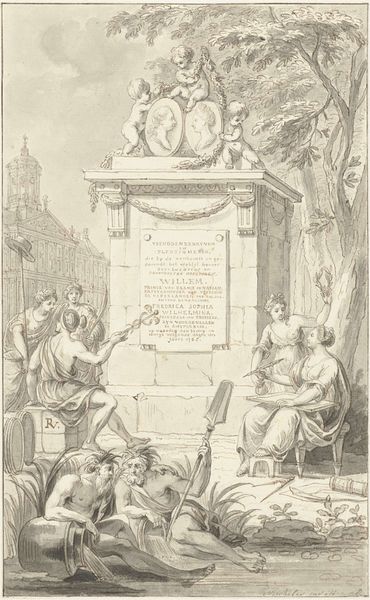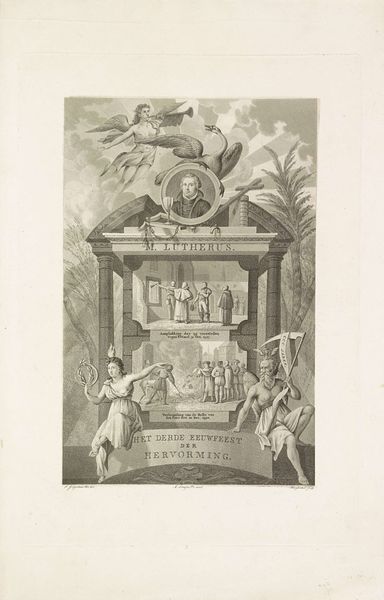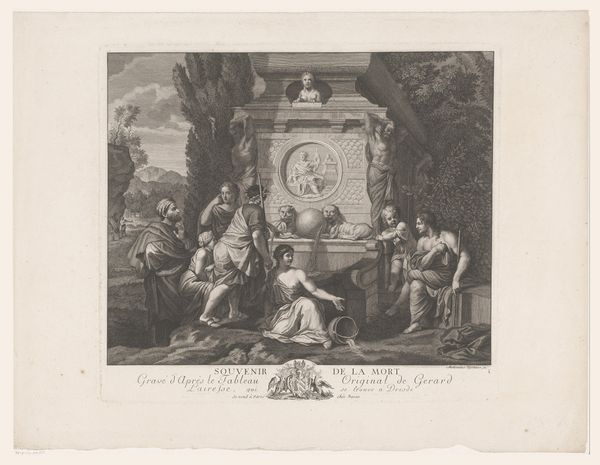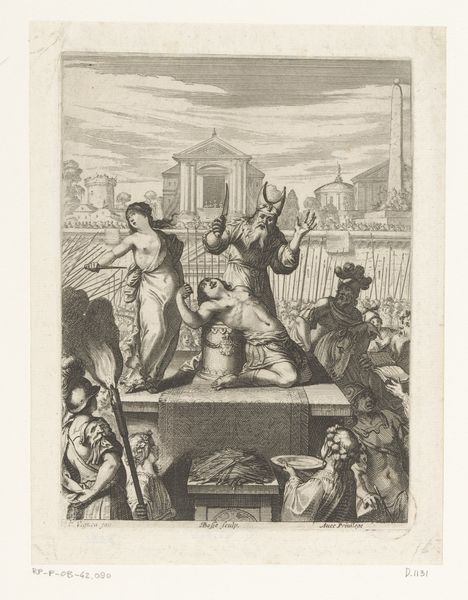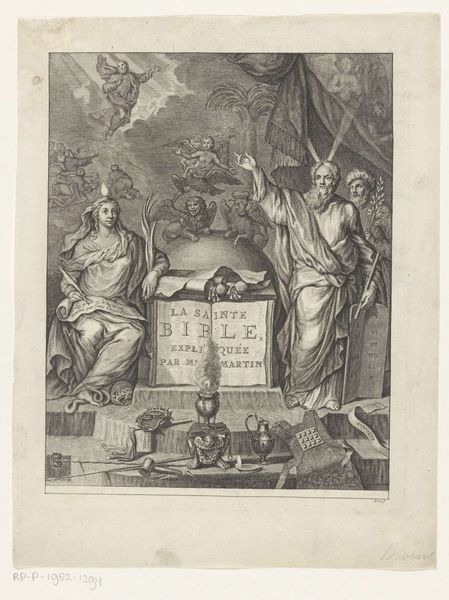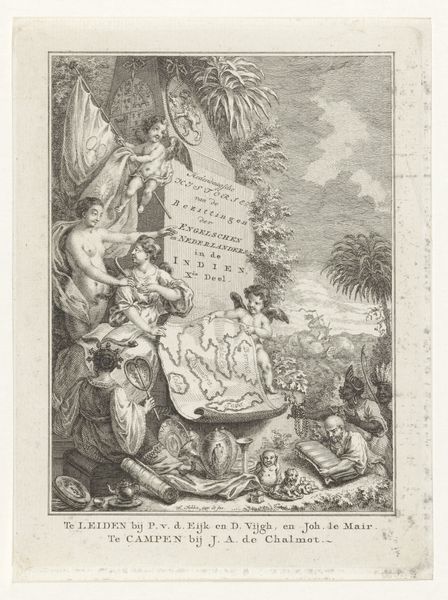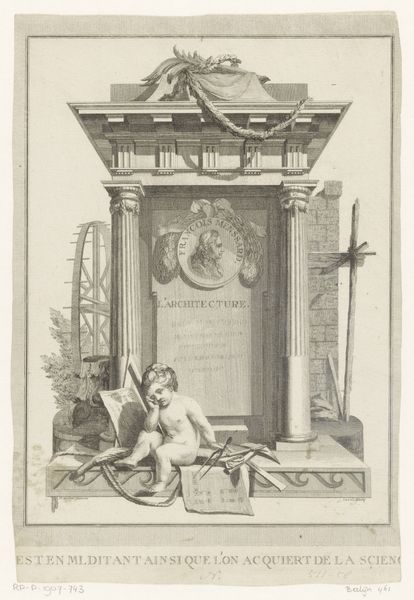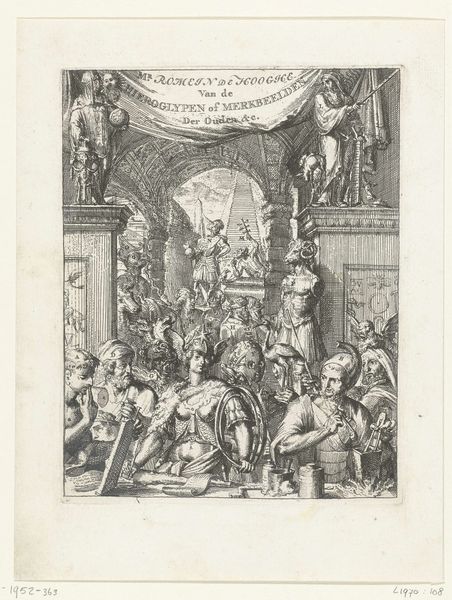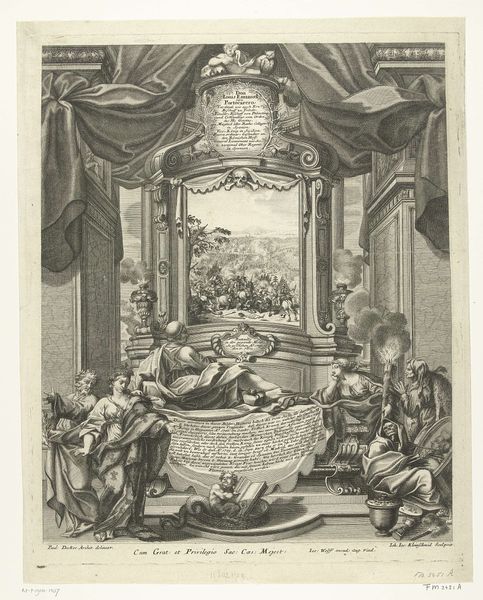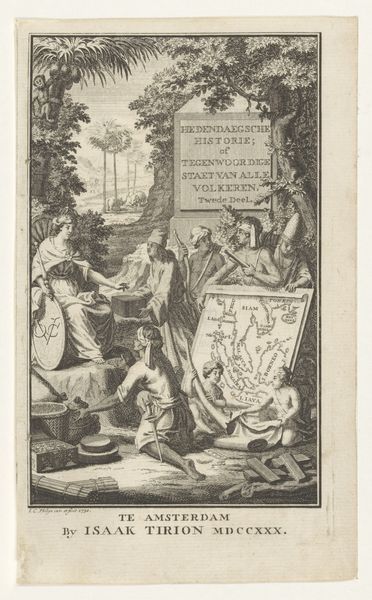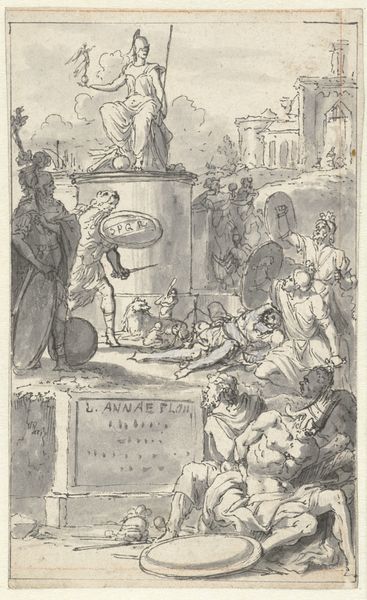
print, engraving
#
neoclacissism
#
allegory
# print
#
old engraving style
#
cityscape
#
history-painting
#
engraving
Dimensions: height 395 mm, width 238 mm
Copyright: Rijks Museum: Open Domain
Editor: This is “Allegorie op de aankomst en het verblijf van Willem V,” an engraving made between 1772 and 1773 by Reinier Vinkeles, currently residing at the Rijksmuseum. It has an old-world charm, very formal, and a clear dedication in the center of the piece. What stands out to you? Curator: This engraving is steeped in symbolism reflecting both the arrival of Willem V and broader civic values. Consider the figures adorning the monument; the putti holding medallions symbolize continuity, echoing classical ideals of leadership, while the seated figures themselves embody abstract ideas. Who are these figures to you? What do you see them representing? Editor: They seem like figures from Greek mythology perhaps? Curator: Precisely! Note the presence of classical figures interspersed with those seemingly representing commerce or local waterways, indicative of Amsterdam itself. This juxtaposition creates an allegorical tableau. Notice, also, how the civic building in the background grounds the allegory to a specific time and place in Dutch history, even as the image invokes the past. The symbolic message attempts to root the new leadership of Willem V in a continuum with these historical virtues. Editor: That's a lot of layers. It almost feels like a political ad, but from a different era. Curator: Yes, these prints functioned as instruments of soft power. These prints served as visual arguments, participating in constructing a narrative of authority. Consider what happens when symbols are carefully placed to evoke a specific response; power and virtue are transferred to Willem through this imagery. Editor: I didn't realize how deliberate each part of the engraving was in constructing this political message. Curator: Exactly! Every line in this engraving, imbued with historical, psychological and cultural significance, works to weave Willem V into the larger cultural memory and its accompanying ideologies. Hopefully, you’ll look at it with newer eyes the next time you encounter such a historical artifact.
Comments
No comments
Be the first to comment and join the conversation on the ultimate creative platform.
